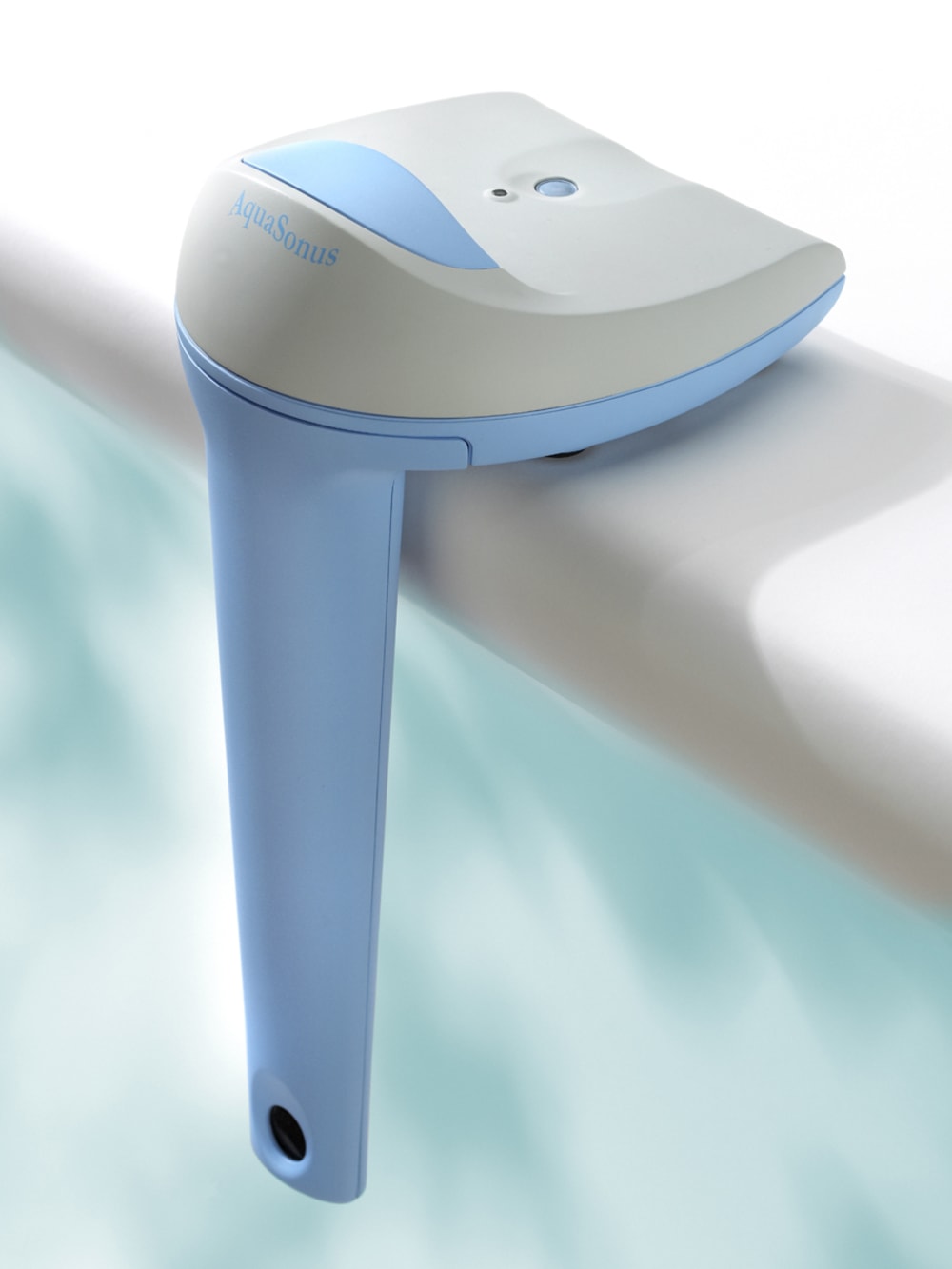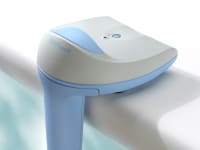
Drowning is the second leading cause of death for children, and most occur in residential swimming pools. On average, 5,100 children are treated for submersion ijuries each year, and 383 pool related fatalities reported per year involving children younger than 15 years of age. 76% of reported fatalities were children younger than 5 years of age.
The majority of pool alarms offered in the maketplace are based on water displacement technology. This technology relies on the waves that result from a child falling into the pool reaching the alarm's trigger mechanism to sound an alarm. This approach results in a product that responds slowly and is prone to false alarm.
The AquaSonus Passive-Sonar System based on state-of-the-art digital signal processing; the use of low power and embedded microprocessors results in enhanced functionality, accuracy, reliability, and ease of installation and use.
The system consists of two seperate units which communicate via a wireless RF link. The poolside unit is installed at the edge of the pool and extends into the water. The portion of the unit that is below the surface of the water contains a hydrophone. It monitors the acoustic sounds which are present in the pool. A microprocessor in the poolside unit digitizes these acoustic signals and analyzes them using software which implements a proprietary digital signal processing algorithm. When the acoustic signature of a child or a pet is detected, an alarm is sounded. The poolside unit is battery powered.
The second unit is a monitorwhich resides inside the house. When an alarm condition is detected, the poolside unit informs the monitor via the RF link, and an alarm is sounded inside the house as wll as outside. In addition, the monitor displys the batterycondition and overall "health" of the poolside unit via an LED display. The monitor is via a small wall plug power supply, and has battery backup capability in the event of a power failure.
The market for this class of product is large. There are approximately 10.2 million residential in-ground swimming pools world wide; 5.2 domstic and 5.0 million international. This product is intended for any pool owner who recognizes the inherent hazard associated with pool ownership, and the risk of child drowning.
Three basic elements ae necessary to manufacture the AquaSonus system: ASA resin has outstanding weatherability, UV stability and chemical resistance. It is injection moldable and produces consistent quality parts.
Printed circuit boards: There are two boards in the poolside unit; one for the microprocessor, wireless transmitter, and other discrete components, and a second board for the piezoelectric horn and its associated alarm circuitry. There is a third board in the monitor unit. It has a microprocessor, a wierless reciever, piezoelectric horn alarm circuitry and discrete components.
Hydrophone: A custom device designed by AquaSonus for underwater acoustic response. It is comprised of a polycarbonate housing, a PZT ceramic disc and specially formulated sealent/encapsulant.
-
Awards
-
 2011 Safety & Security Category Winner
2011 Safety & Security Category Winner
Like this entry?
-
About the Entrant
- Name:William C. Roberts
- Type of entry:teamTeam members:Bob Hoenig
Bill Roberts
Paula Bailey - Software used for this entry:Microsoft Visual Studio, Silicon Labs Integrated Development Environment, Pro/E Cad Tools
- Patent status:patented





